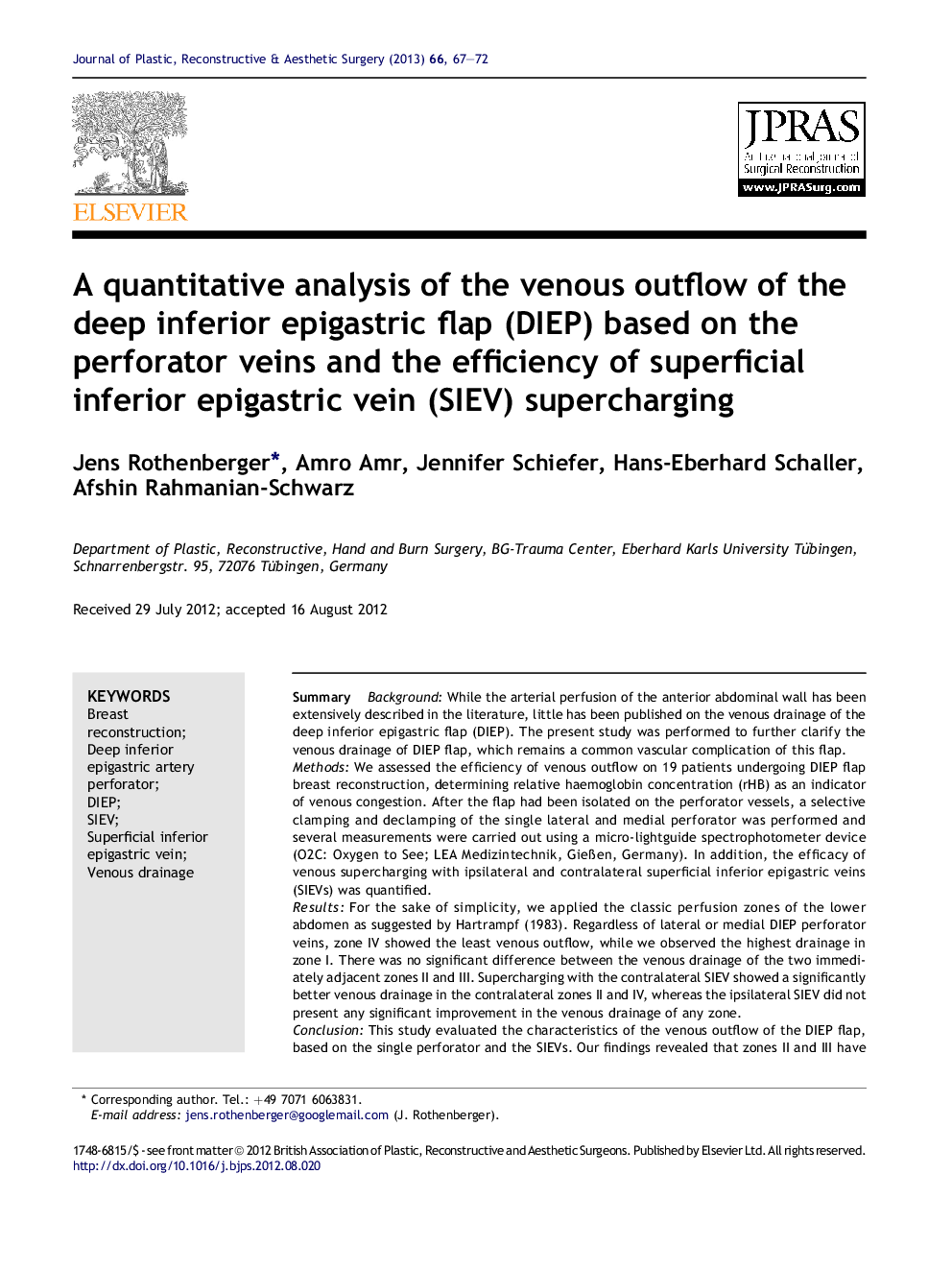| Article ID | Journal | Published Year | Pages | File Type |
|---|---|---|---|---|
| 4118844 | Journal of Plastic, Reconstructive & Aesthetic Surgery | 2013 | 6 Pages |
SummaryBackgroundWhile the arterial perfusion of the anterior abdominal wall has been extensively described in the literature, little has been published on the venous drainage of the deep inferior epigastric flap (DIEP). The present study was performed to further clarify the venous drainage of DIEP flap, which remains a common vascular complication of this flap.MethodsWe assessed the efficiency of venous outflow on 19 patients undergoing DIEP flap breast reconstruction, determining relative haemoglobin concentration (rHB) as an indicator of venous congestion. After the flap had been isolated on the perforator vessels, a selective clamping and declamping of the single lateral and medial perforator was performed and several measurements were carried out using a micro-lightguide spectrophotometer device (O2C: Oxygen to See; LEA Medizintechnik, Gießen, Germany). In addition, the efficacy of venous supercharging with ipsilateral and contralateral superficial inferior epigastric veins (SIEVs) was quantified.ResultsFor the sake of simplicity, we applied the classic perfusion zones of the lower abdomen as suggested by Hartrampf (1983). Regardless of lateral or medial DIEP perforator veins, zone IV showed the least venous outflow, while we observed the highest drainage in zone I. There was no significant difference between the venous drainage of the two immediately adjacent zones II and III. Supercharging with the contralateral SIEV showed a significantly better venous drainage in the contralateral zones II and IV, whereas the ipsilateral SIEV did not present any significant improvement in the venous drainage of any zone.ConclusionThis study evaluated the characteristics of the venous outflow of the DIEP flap, based on the single perforator and the SIEVs. Our findings revealed that zones II and III have a similar venous drainage regardless of the perforator veins used. The supercharging of the contralateral SIEV leads to an improved venous outflow compared to the ipsilateral SIEV. This may support surgeons in minimising venous complications and may improve the degree of DIEP flap survival.
